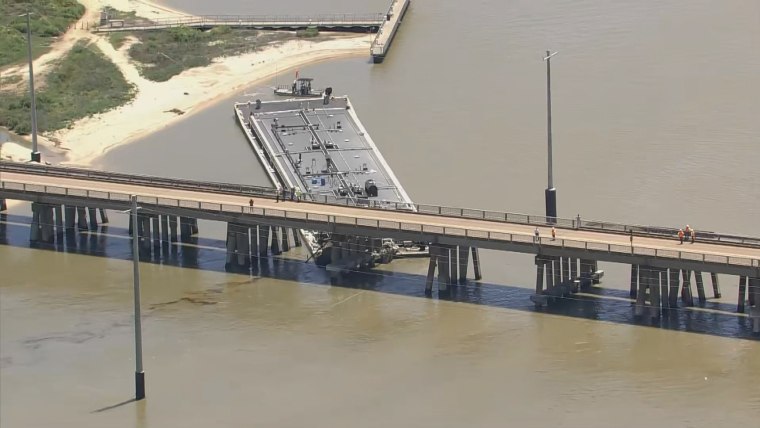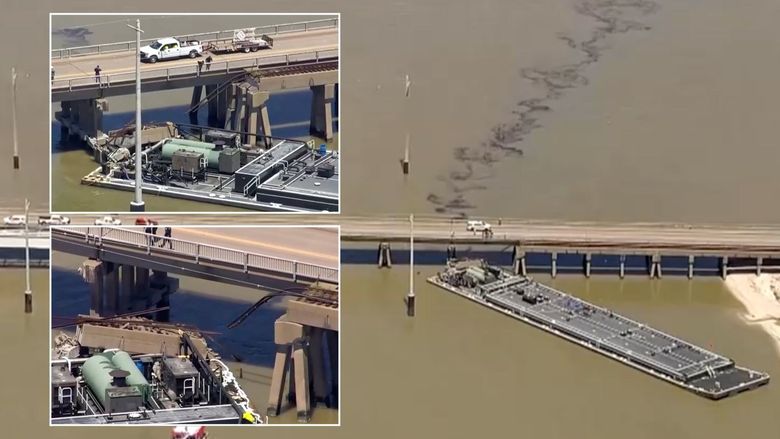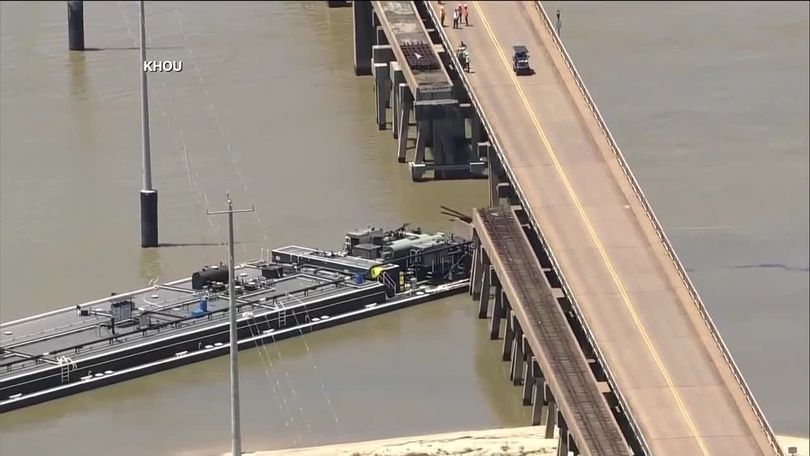A 321-foot barge, MMLP-321, collided with a bridge in Galveston, Texas, on Wednesday morning, causing significant damage to the structure and resulting in an oil spill. Fortunately, no injuries were reported, but the incident halted traffic on the causeway and in the intercoastal waterway.

Extent of the Oil Spill
Initial estimates suggest that the barge may have spilled up to 2,000 gallons of oil into the water. However, officials from the U.S. Coast Guard have indicated that the actual amount of oil introduced to the water is likely to be less than initially feared. Photos released by the Coast Guard show thick oil sitting on top of the waterway, prompting ongoing cleanup efforts.
Response and Environmental Concerns
As of Thursday afternoon, more than 600 gallons of oily water mixture have been recovered, along with over 5,600 gallons of oil product that remained on the barge and did not spill into the water. The spilled product is identified as vacuum gas oil, characterized by its dark, waxy consistency, and heavy fuel oil odor.
According to the Alaska Department of Environmental Conservation, vacuum gas oil can cause significant harm if released into the environment, posing risks to wildlife and human health. It can lead to mild to severe pulmonary injury if aspirated into the lungs and may cause irritation to the eyes, skin, and respiratory system upon contact.
Environmental Impact and Response Efforts
Texas Parks and Wildlife, along with other responding agencies, including the Kills and Spills team, are actively monitoring and assessing the situation. They have reported that Galveston Island State Park, located on the opposite end of Pelican Island, has not been affected thus far.

The Pelican Island Bridge Allision Response website has been established to provide updates and facilitate reporting of any injured or oiled wildlife. The public is urged not to handle any animals they come across but to report them to trained professionals at 832-514-966 for appropriate response. This incident underscores the importance of swift and coordinated response efforts to mitigate environmental damage and ensure the safety of the local community and wildlife in Galveston, Texas.
